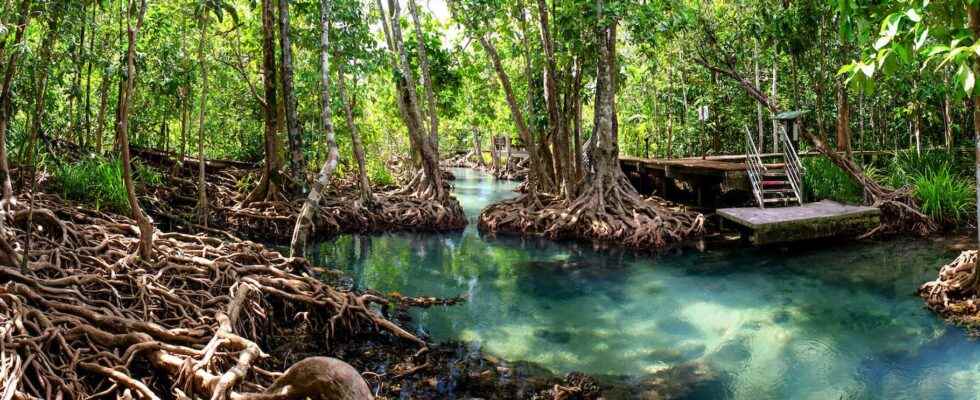To avoid a climate catastrophe, we are going to have to decarbonize our economy. But also, counting on certain ecosystems to store carbon. And researchers are now offering us a map of these ecosystems that must now be preserved at all costs.
Redwood forests, mangroves on the tropical coasts or the bogs. All these regions have captured, over the centuries, billions of tonnes of carbon. But they are now in danger. Threatened by land use conversion and global warming, deforestation, forest fires, intensive agriculture or even drainage swamps. And researchers united under the banner of Conservation International (United States) warn us, in the context of the climate crisis we are experiencing, “There are areas that we cannot afford to lose.Their destruction would indeed release a colossal amount of carbon.
This carbon, scientists do not hesitate to qualify as irrecoverable. Irrecoverable because the regeneration of these ecosystems – although generally relatively fast globally – would take too long for us to reach the zero net emissions by 2050. And avoid the worst for our climate system. Already, researchers estimate that since 2010, at least 4 gigatonnes (Gt) of unrecoverable carbon have been lost permanently. However, there are still nearly 140 Gt!
However, no less than half of this unrecoverable carbon is stored in just over 3% of the land. This is one of the essential conclusions of the work carried out by researchers on this subject. They mapped this unrecoverable carbon, using satellite data and estimates of the total amount of carbon stored by ecosystems.
An effort to be made in a few sensitive regions
To assess the share of unrecoverable carbon, the researchers hypothesized that the land cleared and the ecosystems transformed were then left to fend for themselves. All in order to avoid going into the details of the land conversion. Since the amounts of carbon that can be stored are very different, whether the land becomes oil palm plantations or … parking spaces.
According to the researchers, the most important ecosystems to be preserved are mangroves – which store nearly 220 tonnes of carbon per hectare (t / ha) -, tropical peatlands – over 190 t / ha – and land boreal wetlands – more than 170 t / ha. The key areas to be safeguarded are on the side of the Amazon forests – more than 30 Gt -, from the islands of Southeast Asia – more than 13 Gt – or in the Congo Basin – more than 8 Gt. And the fact that this unrecoverable carbon is so concentrated in certain regions of the globe should ultimately make it easier to preserve. Already, more than 20% are in protected areas. And nearly 35%, in areas managed by indigenous peoples. To ensure the storage of 75% of unrecoverable carbon, it would therefore be sufficient to protect 8 million square kilometers of land more.
The problem, all the same, is that these reservoirs are also today mainly located in regions with high potential – or risk, depending on the point of view – of development. The researchers therefore hope that their maps will make it possible to see more clearly. By helping to focus efforts on the areas that matter most to the climate. Especially since these areas are generally rich in biodiversity. The opportunity finally, to kill two birds with one stone!
Interested in what you just read?
.
fs11
